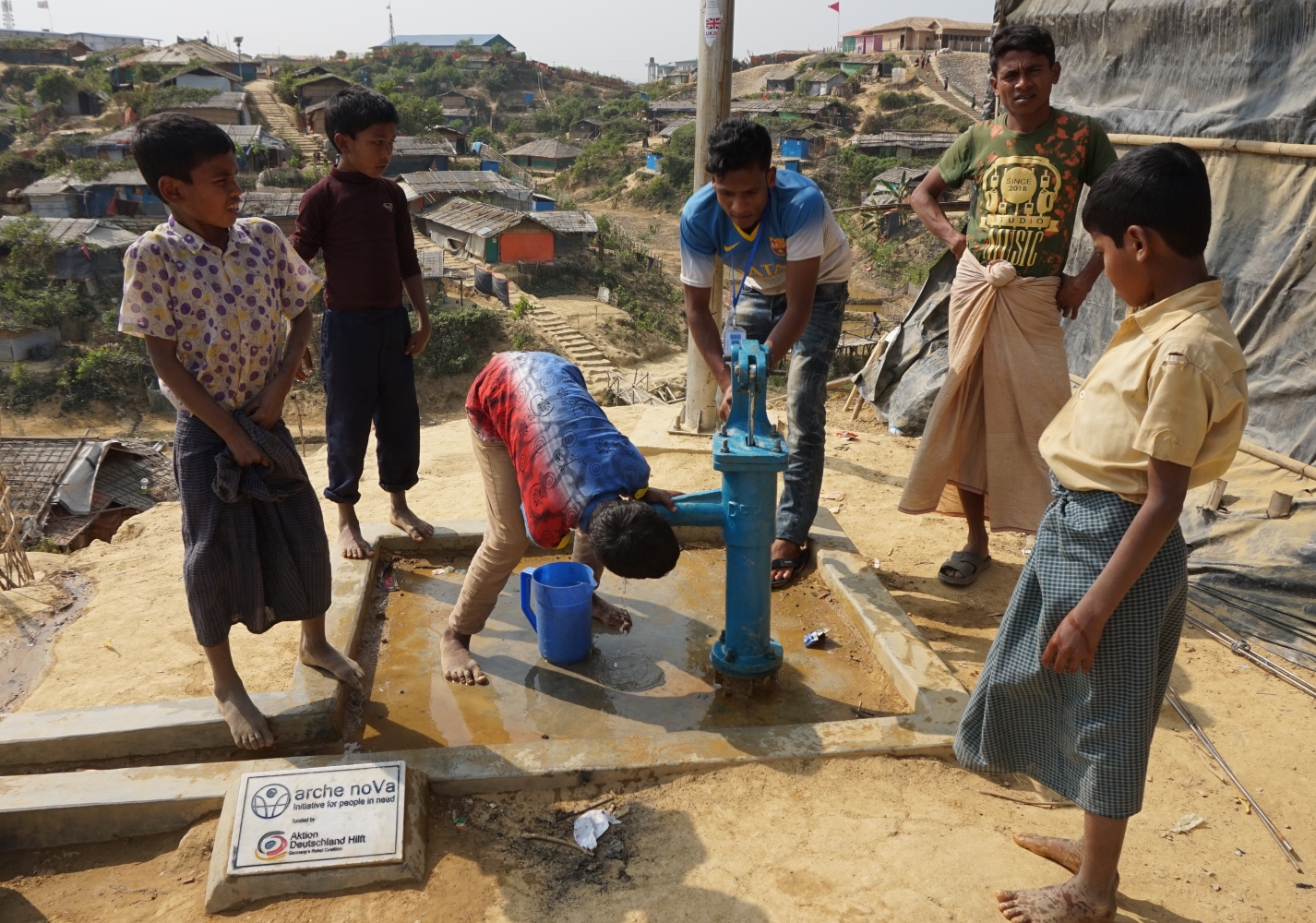Because so many people have found refuge in the Kutupalong camp, the infrastructure is heavily overloaded. The hills on which the camp is built, which have been deforested due to the high consumption of firewood, can easily slip. The ground is no longer stable and mudslides can occur during the monsoon season. All the firewood is needed to fire the inefficient stoves, because the distributed kerosene is far from sufficient.
Especially women and children have to walk up to eight kilometres to collect fuel. They are exposed to many dangers, such as sexual violence or animal attacks. In addition, the stoves produce harmful smoke, which is distributed throughout the camp. The drinking water situation is extremely tense, the groundwater level has dropped sharply, shallow wells are already largely dried out and heavily polluted. In order to improve the situation, deep wells have already been constructed to supply clean water. Since the new deep wells have to be drilled over 200 metres deep, we are also installing solar-powered pumps to pump the water.
In order to stabilize the slopes, fast growing, deep-rooted plants should be cultivated. The selected, low-priced grass species holds the soil with its long roots even during monsoons. 250,000 plants are to be cultivated in three camp areas in which around 16,000 families live. In addition, Moringa trees will be planted in tree nurseries to improve the nutritional situation, which will later be planted together with fruit tree seedlings together with the inhabitants of the camp. All participants receive training in the value, cultivation, care, processing and use of Moringa. In addition, we distribute further seed packages to families. This enables them to grow tomatoes, winter vegetables, spinach and aubergines and improve their nutritional situation.
In order to make more efficient use of the little available firewood, locally trained bricklayers are building Bondhu Chula stoves with locally available materials. They prepare the food in a fraction of the time and fuel otherwise used and are also much safer. Not only wood, but also dried manure and thin branches can be used as fuel. In this way, air and CO2 emissions can be significantly improved.













